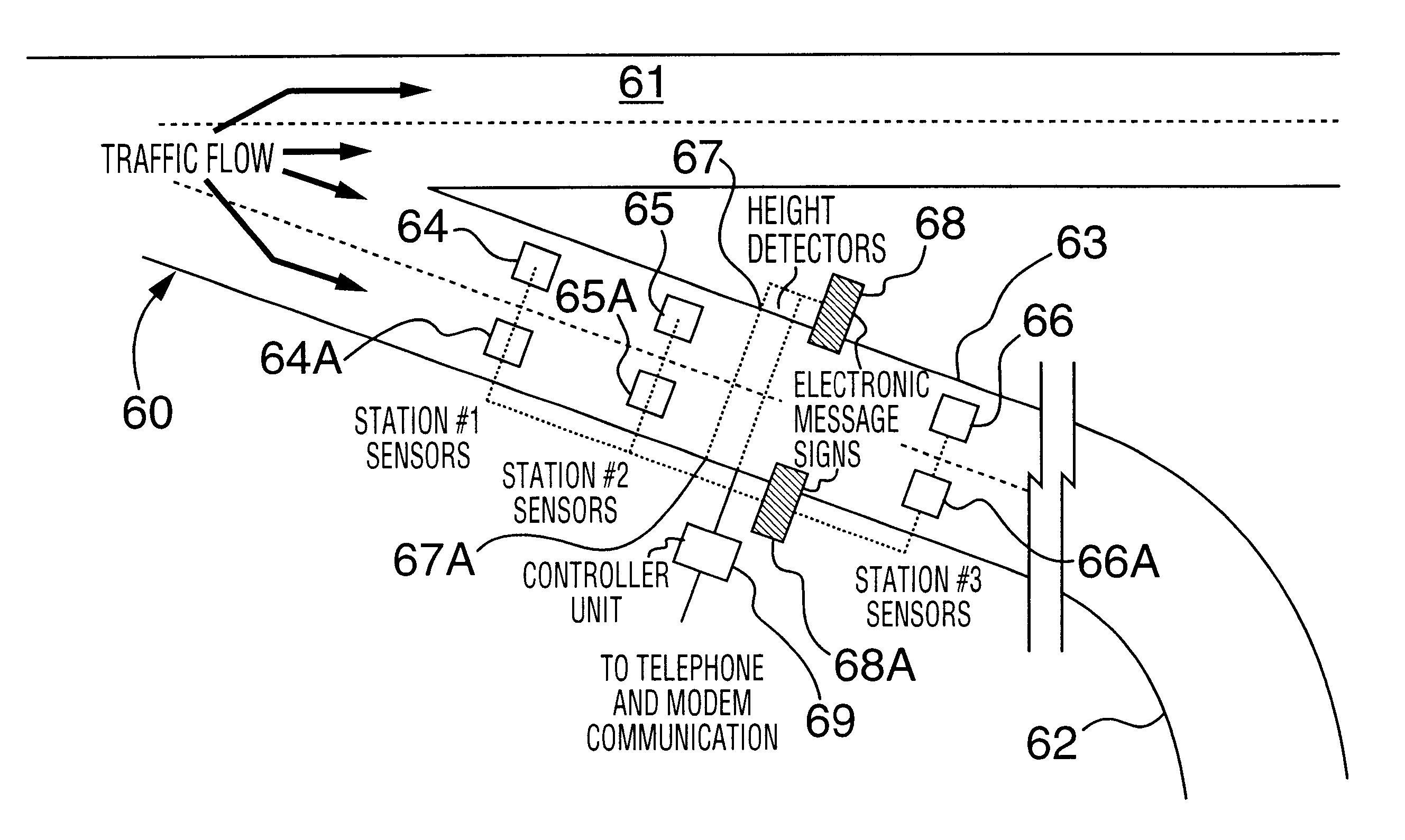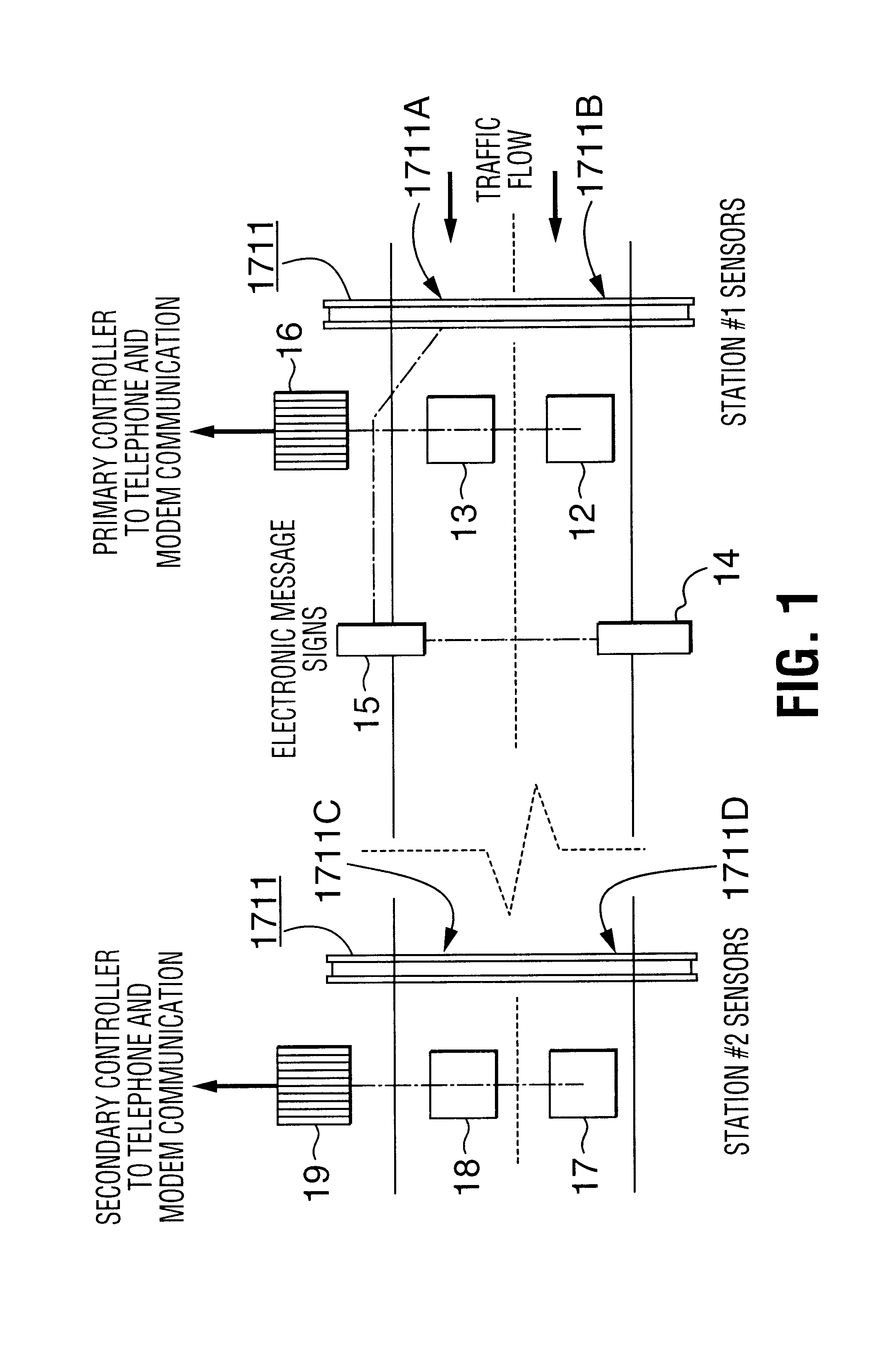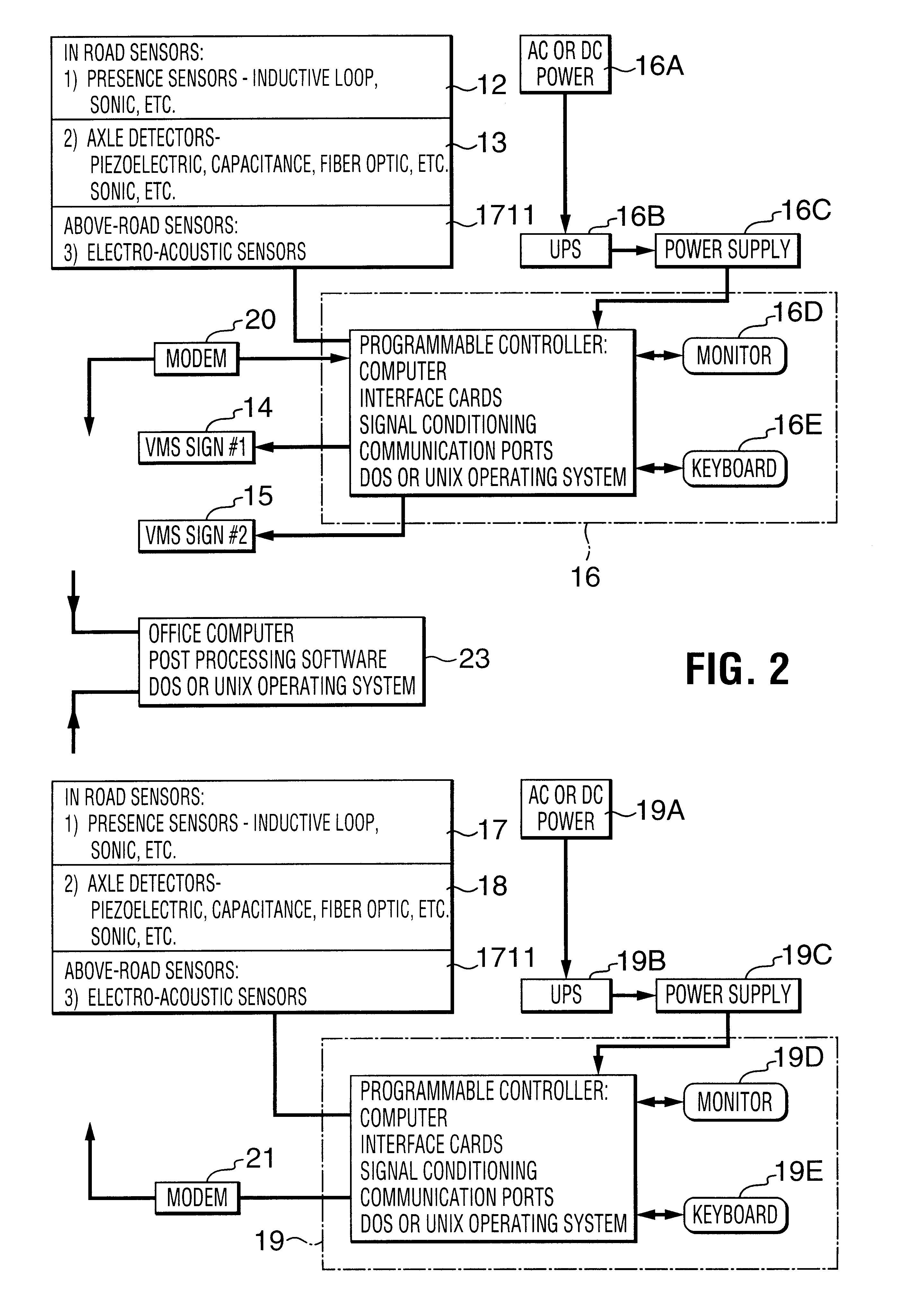Truck traffic monitoring and warning systems and vehicle ramp advisory system
- Summary
- Abstract
- Description
- Claims
- Application Information
AI Technical Summary
Benefits of technology
Problems solved by technology
Method used
Image
Examples
Embodiment Construction
(A) Hazard Warning System
A generic aspect of the invention will now be described with reference to FIGS. 1 through 5. This generic aspect comprises a warning system which is installed at the approach to a hazard, whether it be a curve, an incline, a blind intersection, a traffic-signal controlled intersection, etc.
(i) Description of FIG. 1 and FIG. 2
Referring to FIG. 1 and FIG. 2, the hazard warning system comprises, at a first sensor station, a first set of above-road electro-acoustic sensor arrays 1711, (namely, 1711A, 1711B) for detecting trucks by means of acoustic signals. The above-road electro-acoustic sensor arrays can determine whether the detected vehicle is a truck, or is not a truck, by an analysis of the sounds emanating from the detected vehicle. In addition, the truck may be classified dependent on its length, since the length of the vehicle can be determined by the length of time between the beginning of the detection of the vehicle and the ceasing of detection of th...
PUM
 Login to View More
Login to View More Abstract
Description
Claims
Application Information
 Login to View More
Login to View More - R&D
- Intellectual Property
- Life Sciences
- Materials
- Tech Scout
- Unparalleled Data Quality
- Higher Quality Content
- 60% Fewer Hallucinations
Browse by: Latest US Patents, China's latest patents, Technical Efficacy Thesaurus, Application Domain, Technology Topic, Popular Technical Reports.
© 2025 PatSnap. All rights reserved.Legal|Privacy policy|Modern Slavery Act Transparency Statement|Sitemap|About US| Contact US: help@patsnap.com



